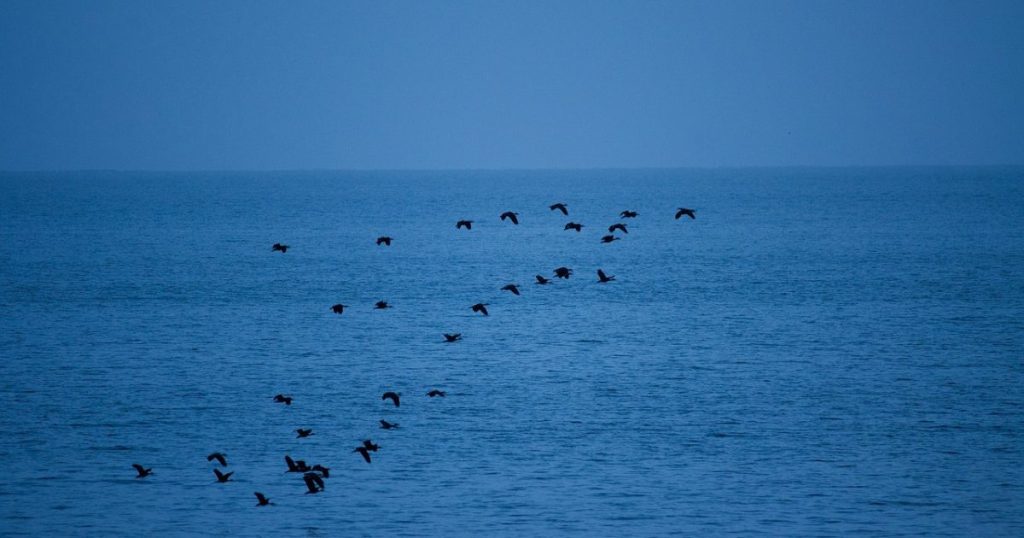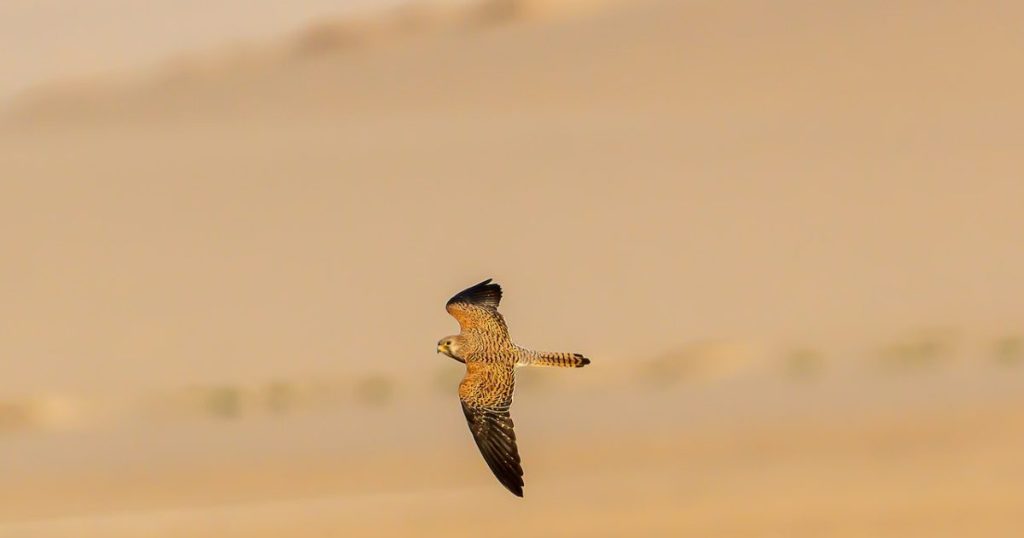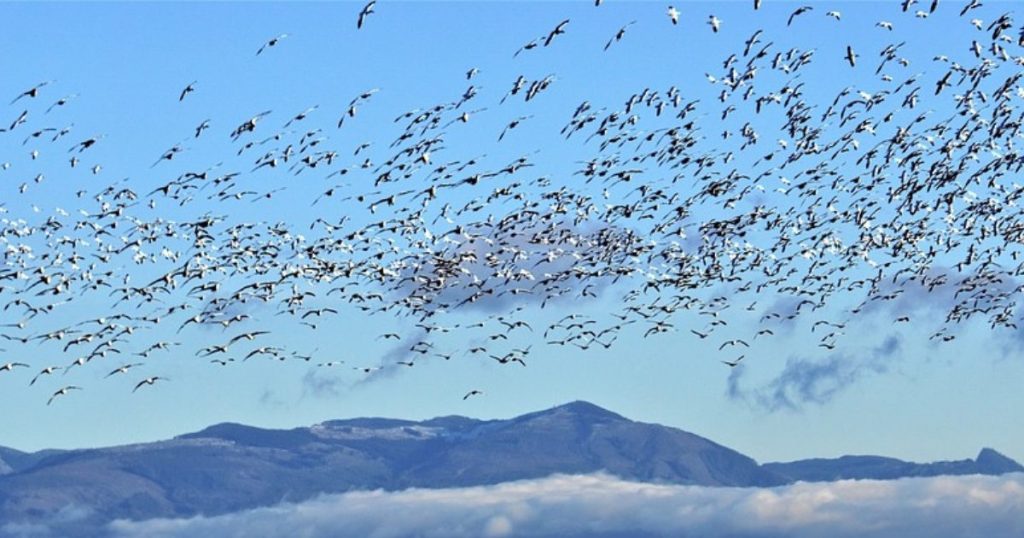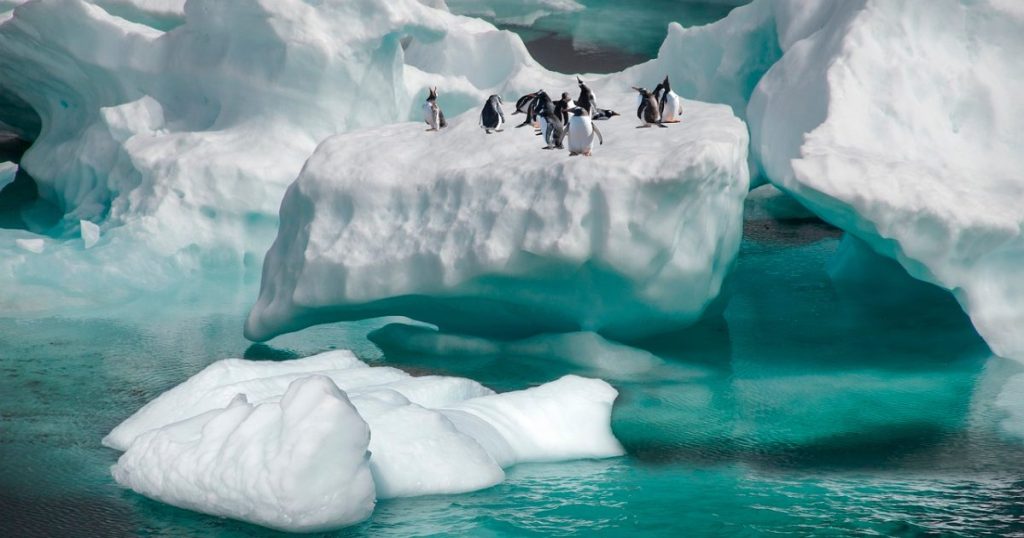Most birds that travel by flapping flight can migrate over small areas of an inhospitable habitat that they can cross in a few hours. The difficulties come mainly on longer journeys that require more than 24 hours of non-stop flight, or which present unusually harsh conditions. Many of the birds that breed in the British Isles face difficult journeys, as do birds elsewhere, and this chapter focuses on the various adaptations that enable birds to complete such journeys successfully. The fact that some land birds can traverse inhospitable areas does not imply that all could do so. Much depends on the features of the birds themselves, such as their body sizes and physiology, and also on the habitats to which they are adapted.
SEA-CROSSINGS
Land bird sea crossings
Land birds that migrate over oceans provide some of the most extreme examples of endurance flight and precise navigation, when they travel, without the opportunity to feed, drink or rest, over tracts of open water devoid of helpful landmarks. They cannot take shelter, as birds do over land when the weather turns against them. While some land birds on over-sea flights take whatever opportunities for rest are available, stopping on ships, oil rigs, and other installations, or even on mats of flotsam, these individuals probably represent an exhausted minority, and almost certainly most land birds make water-crossings non-stop.

On a wider scale, all the major seas and oceans of the world are crossed regularly by some land-bird species. Each year, millions of birds of a wide range of species cross abroad in front of the Mediterranean Sea in the Old World or the Gulf of Mexico in the New World. At their widest points, both these crossings make more than 1,000 km. Trans-gulf crossing is the most hazardous as the storms are more frequent specifically in the autumn hurricane season.
Smaller numbers of other birds also cross major inland waters, such as Caspian and Baikal in the Old World and the Great Lakes in the New World. Crossing these waters by direct flights involves risks, but saves time and energy over the alternative of flying around them.
To accomplish the longer of these over-water journeys land birds would take more than 100 hours of non-stop flight in still air, but by taking advantage of favorable winds, they can greatly shorten their flight times. Participants include many shorebirds and passerines, also waterfowl, unlike others, they can rest on the ocean if tired.
Bad weather in sea crossing
In all long sea-crossings by land birds, behavior with respect to weather is paramount. Birds often wait in coastal localities for days at a time for conditions to improve. Even then, they sometimes seem reluctant to strike out over the water, flying along the coast or turning back inland.
For a long sea-crossing, birds ideally need
clear skies,
a good tailwind, and
enough body fuel for any emergencies that might arise.
What if the weather worsens en route?
Despite favorable conditions at takeoff, the weather may worsen en route, and a sufficient body reserve is the most obvious way a migrating bird can cope with conditions that a human pilot, like weather forecasts, can anticipate and avoid. In such crossings over the sea, natural selection acts severely if there is any kind of mistake or mishap, and plenty of evidence points to heavy mortality. If birds fly high enough, they can avoid the hazards of mist and rain, and on long over-water flights, birds have often been detected by radar at heights exceeding 4 km above sea level.
Sea birds ocean crossing
In contrast to land birds, seabirds migrating over water would seem to have plenty of opportunity to rest and pick up food en route. But this is not always the case. Many seabirds breeding at high latitudes migrate over the equator, and some tropical seas are among the poorest on Earth. In any case, foods such as fish tend to be concentrated in particular areas, which may be few and far between. Evidence is accumulating that, like some land birds, seabirds can make extremely long journeys without eating, refueling chiefly at traditional staging areas.
DESERT CROSSING
Desert classification
Overall, one-third of the earth’s land area is classed as desert, a term that covers all arid landscapes, from the sparsely vegetated regions of western North America to totally barren rock and sand. Providing there is some vegetation, specialist bird species can flourish in such habitats, but most other birds cannot find sufficient food or water, or remain active at such high temperatures. Outside the tropics, most deserts are at their best in spring, after sparse winter rains have promoted plant growth and flowering. They are much less hospitable in autumn when plants have withered under the desiccating heat of summer. The problems of desert flights result from the long distances without food or water and the searing daytime temperatures which bring risks of overheating and dehydration.

The Sahara
The largest and most severe desert in the world sits across one of the main bird migration routes, between western Eurasia and the Afrotropics. It is crossed twice each year by many birds that breed in the British Isles.
The Sahara extends from the Saudi Arabian peninsula in the east to the Atlantic coast in the west. It extends 1,000–1,500 km from north to south and covers an area of 12 million km2, about the same as the USA. Much of it is bereft of vegetation, lacking even the sparsest of desert scrub. Daily maximum temperatures during the autumn and spring migration periods average 25–38°C, but sand surface temperatures during the day may reach 70°C. Relative humidity drops below 10 percent.
Yet despite its harshness, this desert is crossed and re-crossed every year at all longitudes by an estimated 5,000 million individuals of 186 land-bird species, a density equivalent to one migrant per hectare of breeding range.
Problems crossing deserts
Throughout its range, the desert may have offered better conditions for migrants a few thousand years ago than it was today. In fact, the difficulty of this journey is increasing all the time, as the desert expands north and south under human influence, with an extra 60,000 km2 per year being added to its area. During these times of climate change, other areas on the migration route are also becoming drier. These various changes mean that, over the centuries, birds have had to cross ever-widening areas with little or no access to food or water, while suitable staging areas have become smaller and more widely spaced. These are likely to continue through the future.
The scorching daytime temperatures, combined with an almost total lack of food and water, make crossing the Sahara one of the most arduous journeys undertaken by migratory birds.
Crossing the desert and ocean non-stop
In a number of bird species, at least some individuals seem to cross both the Mediterranean Sea and Sahara desert in a single non-stop flight. In autumn, a combined sea- and desert-crossing has been claimed for various waterfowl and waders. Circumstantial evidence stems partly from the relative scarcity of these species on the ground in North Africa in autumn, and partly from the body reserves accumulated, which are calculated to be adequate for a journey. Other birds break their journeys for refueling in North Africa and hence separate the Mediterranean and Saharan crossings.
While some small passerines may cross the desert in a single non-stop flight, others have been found to break their journeys in the daytime, but mostly without feeding. At least some individuals of many passerines species descend to spend the day sheltering motionless near oases, or even in the open desert in the shade of rocks, continuing their journey in the cool of the night, progressing like this, they can cross the desert in a few nighttime flights. The majority of trapped migrants at such sites showed high body mass and fat loading, with sufficient reserves for the onward flight, so they had not been grounded through lack of fuel. In resting by day and flying by night, such birds traveled in cooler conditions, and may thus have reduced their dehydration risks, but they would have added many hours to their journey time (giving two to four nights for the total journey across the desert). Yet other individuals of these same species stopped at oases, where they fed and drank, usually remaining for two to four days, but occasionally for up to three weeks at a time, if they must rebuild their body reserves. However, the birds stopping at oases can only be a tiny proportion of the numbers passing but would normally have little or no opportunity to feed or drink en route.
HIGH MOUNTAIN CROSSING
Mountains in the British Isles are too low to present significant obstacles for migrating birds, and elsewhere birds regularly cross mountain ranges much higher than any in Britain. World’s highest mountain range, the Himalayas, sits directly across primary north–south migration routes, also several European ranges, such as the Carpathians, Pyrenees, and the Alps. Depending on their direction, birds may fly around them or cross the high mountains. Radar estimations suggest that many birds cross high mountain ranges by non-stop flights, but as viewed they show that they funneled through valleys and passes, where they can stop and feed, at least in autumn when conditions are favorable.

Problems in mountain crossing
The main problems of mountain-crossing are the costs of climbing to high altitudes (greatest in large birds), and the extreme cold, thin air, and low oxygen levels encountered on the highest ranges. In autumn, many birds stop and feed in the high valleys, but these same areas may be snow-covered and frozen in spring, affording no source of food. Moreover, strong winds are often funneled through the valleys, which can greatly hinder birds that have to fly against them. Not surprisingly then, many birds fly around high mountain areas rather than taking a more direct route over the tops.
Flight type and high land
Wetlands and soaring species tend to avoid higher passes. Raptors that use a flapping flight, such as falcons, appear much more often in the high Alpine passes than those that depend on soaring, such as buzzards and kites. Few Common Buzzards occur early in the autumn migration season in the high Alps when the soaring flight is most possible. Over the autumn migration season as temperatures cool, the climbing rate average of soaring birds decreases by one-third, decreasing the lift provided by thermals.
Any tendency of birds to cross the Alps thus varies with the innate directions, flight capabilities, and physiological state of the migrants, as well as with the source area, the date in the season, and local weather at the time. These findings from the Alps may well apply also to other mountain areas at similar latitudes. But by far the highest flights are undertaken by those birds that cross the Tibetan plateau and the Himalayas. The best known are the Bar-headed Geese which reach flight altitudes exceeding 8 km above sea level. In the same region, Demoiselle Cranes have also been recorded at more than 7.5 km above sea level. Such birds are evidently pre-equipped physiologically to avoid altitude sickness (hypoxia) and can achieve feats of high-altitude performance that are matched by very few other animals. Not all birds have such flexibility, however, and whatever the advantages of high-altitude flight, many species seem confined to migrate at low elevations, presumably for physiological reasons.
SEA ICE CROSSING
Some birds on their migrations also cross substantial stretches of sea ice, as occurs in spring between Norway and Svalbard or between Siberia and Alaska. Nevertheless, such flights would seem to offer less of a challenge than over-water flights of similar length, because the birds can at least stop and rest in emergencies, to reach their breeding areas many Antarctic and Arctic seabirds travel more than 100 km of sea ice in spring, including some penguin species, which have to walk.

During the glacial periods, birds may have faced much longer ice-crossings than they do now, as they migrated from the south of the extensive ice sheets to the few ice-free refuges that persisted as tundra north of the ice. Such ice-crossings must in some cases have involved journeys exceeding 1,000 km.
Concluding remarks
The various migrations described in this chapter reveal what some birds are capable of achieving on their annual travels. The journeys involved may be assumed to push birds to the limits of their endurance: long non-stop flights without sleep, rest, food, or water, and often in harsh conditions. Most such flights require high fuel deposition beforehand, and some also involve special adaptations for high-altitude flight, extreme heat or cold, dehydration, low air densities, and oxygen levels conditions in which few other animals could survive. Yet some birds can achieve these high-endurance feats without any apparent prior training or acclimatization. The main gap in our understanding is how birds that make non-stop flights extending over several days and nights manage to cope with extreme sleep deprivation. How much do they depend on ‘uni-hemispherical sleep’, resting one side of the brain at a time? This is subjected to further research.
Depending on their journeys, birds need fuel and water in different proportions, and on non-stop flights when they can neither feed nor drink, birds are able to address these different needs physiologically or behaviorally. Physiologically, they may adjust the ratios of reserve fat and protein that are metabolized, yielding different ratios of energy and water. Behaviourally, birds might adjust the times of day (day or night) or the altitudes at which they fly, both of which influence rates of heat and water loss, as well as energy use.
Birds can also reduce their energy needs by selecting times or altitude zones with favorable winds. In fact, one of the most striking findings from studies of difficult journeys is how much birds use behavioral (as opposed to physiological) means to overcome difficulties, involving, for example, flight altitudes, choice of wind conditions, flight times, also stopover frequency and duration, and to rest or feed during stopovers. Some types of behavior are appropriate in some circumstances but not in others. So in order to maintain a favorable energy and water balance, a bird must continually adjust its flight times, flight altitudes, and other behavior according to its own body state and external conditions at the time. It is this adaptability and flexibility which allows certain bird species to cope with some of the most difficult journeys on Earth.